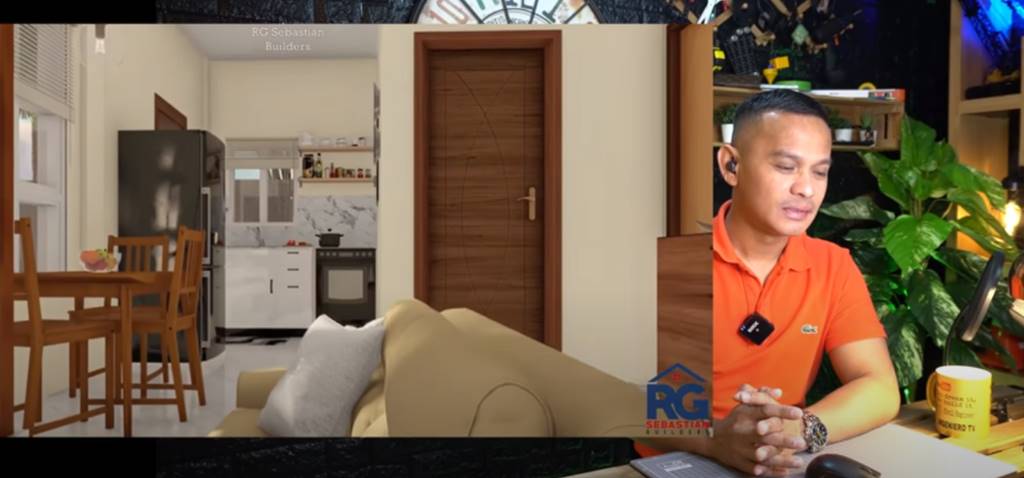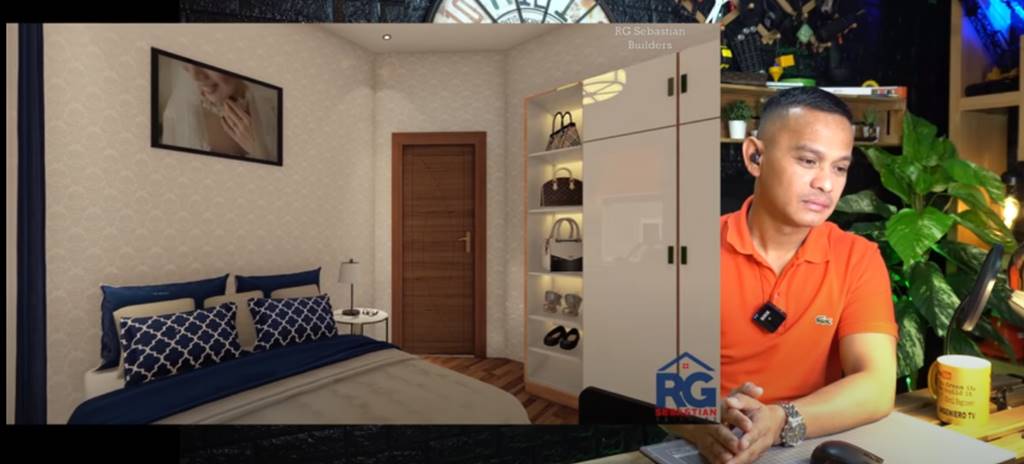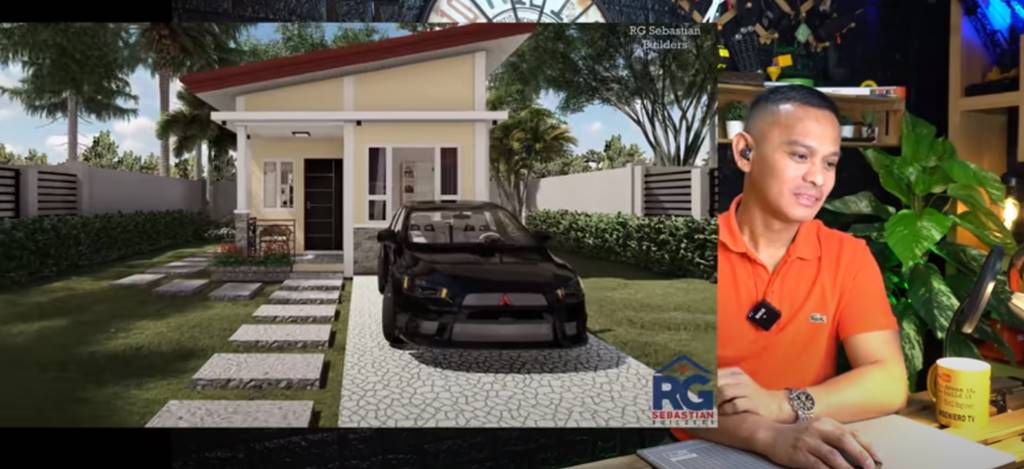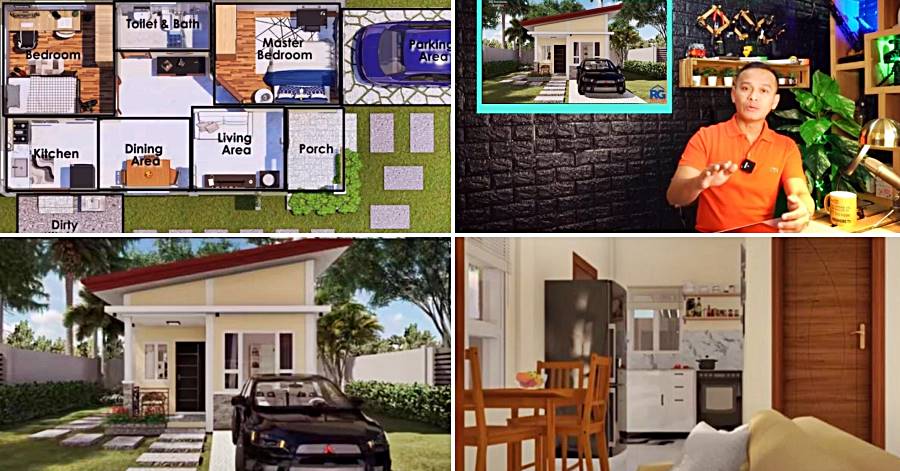Often, when people think about house construction projects, they equate quality with budget. While this applies in most cases, budget is not the sole factor to get your dream house started. That said, creativity plays a major role in the success of the design, sourcing, construction, and finishing of the project. In this video, a Dubai OFW civil engineer shares his estimated costs of building a simple 2 bedroom house. Check out the clip below!
If you look at videos on YouTube, you’ll find an array of house construction projects ranging from budget to luxury houses. While it’s fun and entertaining to see how these projects materialize, getting one made for yourself is an all-different story. In this post, we detail the tips and outline to get your simple two-bedroom house project kick off from the ground. Keep reading until the end of this guide to learn more.
Disclaimer: This post is for information-sharing only. The tips shared by the vlogger (Donald Doniego) featured in this guide are based on his long years of experience as a registered civil engineer based in Dubai. If you would like to receive notifications for similar content, feel free to subscribe to his channel INGENIERO TV.

This Simple 2-Bedroom House Only Costs PHP 875K; Check It Out!
Our featured vlogger, Donald, takes a look at a 45 sqm 2-BR residential house from a design video posted by RG Sebastian Builders on YouTube for inspiration. Donald said that this bungalow home is a good starting project for a small family of four, who’s probably sorting out their budget in preparation for their family life, and the future.
In the video he’s checking out, the house design looked simple yet elegant. The house has lots of natural light inside despite having smaller rooms because of the number of windows.
The kitchen, in particular, was designed to have granite walls and countertops, but Donald recommended using ceramic tiles for these instead. They are of the same aesthetic and durable quality for less cost.
Here are some of the projected costs for the project, subdivided according to the following:
Reinforcement costs (materials)
16 mm = 94 pcs x Php 330 = Php 31, 020
10 mm = 290 pcs x Php 125 = Php 36,250
#16 G.I. wire = 1 roll x Php 2,400 = Php 2,400
Donald said that there is a technique to estimate the amount and cost of the GI wires that you need for the project:
You can choose to use either a local brand (1 roll, 30 kg, Php 2400) or Chinese brand (1 roll, 20 kg, Php 1,900). Since cost is not the sole determiner here for which material you will use for your house, Donald prefers the local brand because the alternative degrades quickly (rust).
Donald also shared some information on how to compute the amount you’ll need to get for a project such as this one.
The unit of steel reinforcement you’ll get is per kilo, one unit will measure about 53 meters. And in construction, a standard measurement for steel reinforcement is 0.30 to 0.40 m. But for this project, 0.30 m is ideal since it’s only a residential project.

Screengrab of a video posted by Ingeniero TV / YouTube

Screengrab of a video posted by Ingeniero TV / YouTube
He then visually demonstrates how to compute the amount in kilos for the project by drawing pieces of steel reinforcement per wall slab then counting the number of intersections each wire makes from either direction for the columns, stirrups, roof beams, vertical and horizontal bars for the CHB, and so on.
The number of intersections will then be multiplied to the standard measurement for residential steel reinforcement, which, as mentioned earlier, is 0.30. For example, 3,281 intersections x .30 m = 984.3 m. Round this number off to 985 divided by 53 and you get 18.58 kilograms. In the projected list Donald used 1 roll because there will be other activities requiring tie wire.

Screengrab of a video posted by Ingeniero TV / YouTube
Concrete (Materials)
Next, for the cement, sand, and gravel, here’s the shortlist of the amount you’ll need and the cost for each item:
Cement: 187 bags x Php 210 = Php 39,270
Sand: 8 m3 x Php 1,400 = Php 11,200
¾-in Gravel: 27 m3 x Php 2,000 = Php 54,000
If you want to determine how many bags of cement you’ll need, you need to get the volume of the slab or column by getting the length, width, and thickness (0.3 m). Simply use this formula: (length x width x thickness). And once you get the cubic meter value, multiply it by the concrete proportion as follows:
Mixture Class: AA
Proportion: 1: 1 ½: 3
Cement in bag (40 kg): 12.0
Sand (m3): .50
Gravel (m3): 1.0
Mixture Class: A
Proportion: 1: 2: 4
Cement in bag (40 kg): 9.0
Sand (m3): .50
Gravel (m3): 1.0
Mixture Class: B
Proportion: 1:2 ½: 5
Cement in bag (40 kg): 7.5
Sand (m3): .50
Gravel (m3): 1.0
Mixture Class: C
Proportion: 1: 3: 6
Cement in bag (40 kg): 9.0
Sand (m3): .50
Gravel (m3): 1.0
Formwork
Next up is the formwork. For this, you will need the following materials:
1 ½” ordinary plywood: 18 pcs x Php 700 = Php 12,600
2” x 3” x 10’ cocolumber: 100 pcs x Php 125 = Php 12,500
Masonry
4″ HOLLOW BLOCKS: 2,434pcs x 13 = 13 Php 31,642
MORTAR/PLASTERING CEMENT: 134bags x 210 = Php 28,140
SAND FOR MORTAR: 7m3 x Php 1,400 = Php 9,800
SAND (BISTAY): 5m3 x 2,500 = 12,500
TOTAL COST: Php 82,082
How to compute for the number of hollow blocks
Get the area of the wall and window, then subtract the window area to the wall area multiplied by 12.5 (1sqm = 12.5 pcs of hollow blocks). Add 10% to cover the hollow blocks that might get broken. Do not stock all of the hollow blocks you need based on your computation. You should buy them in batches so you can avoid getting ones that might break right away during construction. This way, you can also save up on your expenses.
Roofing
2″x6″x1.5mm thk. Tubular: 7pcs. x Php 750 = 750 Php 5,250
2Bx4″xI.5mm thk C-purlins: 17pcs x Php 600 = 600 Php 10,200
12mmø sag rod: 6pcs x Php 175 = 175 Php 1,050
2″x2″ L bar: Ipc x Php 280 = Php 280
Roof Insulation 1Omm sided = Php 4,200
Rib Type roofing long span .40mm = Php 16,240
Flashing & Gutter: Php 6,750
Misc.: Php 5,000
TOTAL COST: Php 48,970
False Ceiling
Hardiflex (4.55 mm): 16 pcs x Php 500 = Php 8,000
Metal Furring (0.55 mm): 62 pcs x Php 115 = Php 7,130
Wall Angle: 10 pcs x Php 45 = Php 450
Carrying Channel (0.6 mm): 10 pcs x Php 110 = Php 1,100
Miscellaneous (W. Clip & Rivets 1/8 x ½) =Php 2500
Total Cost = Php 19,800
Tip: Use hardiflex over plywood to avoid termite infestation.
Tiling (Bathroom/Kitchen)
- Ceramic tiles (cheaper than granite)
- Note: Wall tiles used for the bathroom do not reach the ceiling base in the estimate provided.
Painting = Php 35,785
Doors and Windows
Doors = Php 14,000
Windows = Php 35,800
Electrical and Plumbing = Php 51,450
Joinery= Php 8,800
Septic Tank= Php 10,850
Total= Php 71,100
Total Material Cost
Total Cost of Materials = Php 528,557
Misc. (10% of Total Material Cost) = Php 52, 885
Grand Total of Materials: Php 581, 412
Labor costs
According to Donald, the labor cost would be around 50% of the total material cost, which gives us Php 290,796. This does not yet include the design of the house, permits, and the professional fees of the architect or engineer, so do take that into your budgeting.
Watch the full vlog by Ingeniero TV in the following video:
There you have it! We have just given you an overview of the materials and cost per item you’ll be using and how much of these you’ll need to build a simple two-bedroom bungalow. This short guide shows you that even under a million pesos, it is possible to build a simple home you can call your own. You just need to find the right combination of design and function, as well as lots of research on (quality) materials to make everything work. We hope you found this guide useful for your home construction project. Good luck!
READ NEXT: WATCH: Husband and Wife in UAE Build 4-BR Dream House in Philippines
